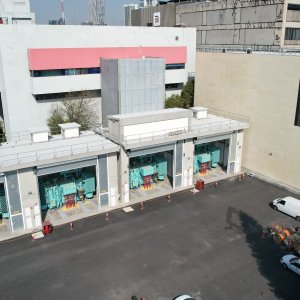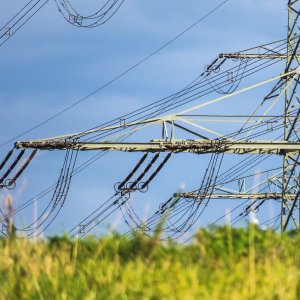Setting the Precedent for Large-Scale Private Auctions

STORY INLINE POST
Q: What was the main driver in creating Bravos Energía?
A: The company was established in 2017. Previously, the company’s co-founders worked as managing directors in different areas of the Ministry of Energy. We all were involved in the design and implementation of the Mexican Wholesale Electricity Market (WEM). We were passionate about the WEM, due to its potential to attract investment to reduce generation costs, lower tariffs and promote economic growth. After finishing our term in public office, we realized that many private companies wanted to participate in the reformed electricity sector, but needed support.
Our company started with two main services. First, as a service provider for participants in the WEM, operating a front office on a 24/7 basis, daily submission of offers to the short-term market, monitoring credit requirements, liquidations and invoicing. We oversee all aspects of market operation for companies with a generation asset or a load seeking to participate in the WEM but that does not have the size required to create a market operations team within their organization. Our second service is focused on market intelligence, particularly forecasts of market prices and tariffs, as well as associated variables like supply and demand of capacity and CELs.
Q: How did you come up with the idea of organizing the first and largest private auction in Mexico?
A: While Bravos Energía was growing as an asset manager, we recognized that our services were not addressing one of the industry’s most urgent needs: matching energy supply with demand under long-term contracts. On one hand, both generators and developers have an important need to find customers willing to sign long-term contracts, in order to make projects financeable under attractive terms. On the other hand, qualified users and suppliers need to ensure low-cost energy supply and stable prices. However, this contracting process did not proceed in an efficient way. First, while CFE’s Basic Supply auctions allowed private buyers to participate, the products were designed for CFE’s Basic Supplier and not very compatible with private buyers’ needs. And while bilateral contracting had emerged as a viable process, our customer’s experiences showed that these processes were expensive and inefficient. Many off-takers had executed RFPs and received some offers, but it was difficult to compare them as every generator presented different conditions, such as technology, generation profile, date of entry in operations and type of commitment. Also, it was difficult for buyers to obtain a diversified portfolio when buying individually. In this context, we identified an important need, and an opportunity to create value. If there was a mechanism to standardize products, foster wide-scale participation from different generators and at the same time attract multiple consumers to reach an efficient scale for new capacity, we could deliver a volume that attracted generators while offering competitive prices for purchasers. This was the basis for launching the first private auction.
Q: How does this proposal differ from the long-term electricity auctions designed by the previous administration?
A: We started working with this idea in March 2019 through discussions with the companies that had participated in defining the original long-term electricity auction framework. During this process, we identified many issues with the design of the Auctions for Basic Supply, that made these auctions less-than-ideal for private industry participants. We tried to identify what changes would be required to ensure products could add more value for both purchasers and generators in a private-to-private framework. The underlying issue was that CFE Basic Supply, as an enormous consumer with a national footprint, was able to assume certain risks as an energy buyer that smaller, less diversified private buyer could not.
Under the previous auction design, CFE Basic Supply receives renewable energy whenever the resource is available. The utility is responsible for filling the gaps and getting rid of surpluses whenever the intermittency of generation causes an imbalance. CFE Basic Supply has a large fleet of thermal baseload and peaker plants under contract, which can react to these situations, but private consumers do not. This is how the “energy balancing” concept emerged as a marketable product. This product offers consumers the right to call on energy when renewable sources are not delivering what is expected. It also gives them the right to sell energy surpluses at a predetermined price when renewables generate more than expected. In a way, it reproduces the service that CFE Basic Supply has under contract, but on a much smaller scale. Most importantly, it ensures that the consumer’s energy cost does not reach extreme levels when renewable resources are underproducing.
Q: What advantages do involved stakeholders receive?
A: Th energy balancing product also benefits generators. Under the Basic Supply auction framework, there was no opportunity for baseload generators to ensure a return on investment through the resulting contract. Even though they could sell capacity, this product only represented one part of the value of their plant. The capacity product only represents the commitment to maintain “steel on the ground” to support the reliability of the system, but this does not include the right to use the associated energy. As such, the capacity product has always been priced in “net” terms, equivalent to a plant’s fixed minus the expected profit from energy sales. This left a major portion of the plant’s income at risk, since it couldn’t be contracted. With the energy balancing product, consumers and qualified suppliers can make a fixed payment to generators in exchange for the availability of energy when needed. Consumers win because the receive a hedge against high prices. And from the generator’s perspective, this guarantees a cash flow with less volatility and facilitates investment in new projects.
Apart from benefiting developers with the entrance of these new projects, this auction scheme also creates opportunities for CFE to get a better return on its existing plants. Recently there has been a lot of discussion about the hidden cost of renewables, because thermal plants have to increase and decrease their generation to respond to renewable intermittency. CFE’s generation facilities are paid for this energy at market prices, but these prices are highly unpredictable so the utility does not know how much money it will receive from providing this service, and can’t count on the additional income in order to budget for maintenance or investment. The energy balancing product is a way to provide CFE with a reliable income from the service it provides to the rest of the system. We believe this will foster a more sustainable model where the users of intermittent resources pay a predictable price to the resources that balance out the intermittency, reducing price volatility for all involved, facilitating new investment in baseload generation plants and ensuring that CFE is paid for the role it plays in maintaining system reliability.
Q: How has the market responded to this initiative and what is next for Bravos Energía?
A: There has been enormous interest through the initial stages of the process. In particular, we have created an inclusive process for the definition of the auction rules, because we believe there are many companies that can add value through their experience, and through participation we can design rules that work well for as many generators, loads and marketers as possible. We have invited every market participant and reached out to numerous chambers and associations for this purpose. We have seen broad participation in the rulemaking process, as well as in the auction itself. In general, we want the auction to be as inclusive as possible. On the generation side, we aim to let the best offers win rather than selecting based on a preliminary filter. And on the consumer side, we are going to apply filters to ensure creditworthiness, because the final objective is to develop contracts that allow projects to be financed, but while maintaining volume as high as possible. The level of interest we have received only confirms there is an enormous gap that private industry seeks to fill with investment. Our hope is that this auction sets a precedent and forges the path for many more large-scale private auctions in Mexico.
Bravos Energía is a pioneer in the administration of generation assets and load centers in the Mexican Wholesale Electricity Market. The company uses its analytical capabilities to maximize value and control risks, allowing its clients to seize the new opportunities in the market.























